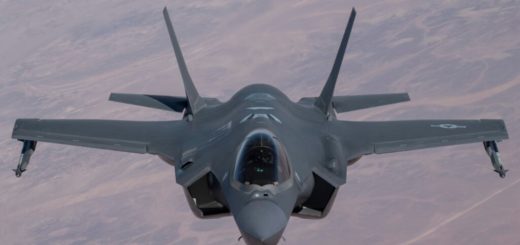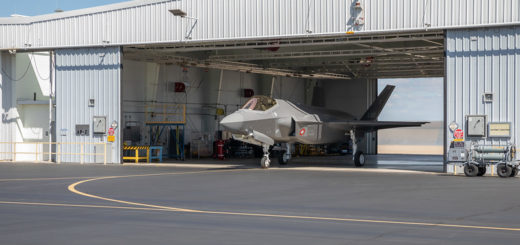Breaking news : U.S. Deploys High Altitude Surveillance Balloon in Alaska to Reinforce Arctic Defense Posture
{loadposition bannertop}
{loadposition sidebarpub}
According to information published by the U.S. Northern Command on August 6, 2025, a high-altitude balloon was launched on August 4 from Joint Base Elmendorf-Richardson’s Malemute Drop Zone in Alaska as part of the large-scale military exercise ARCTIC EDGE 2025. This operation, conducted with the support of Aerostar, is aimed at reinforcing U.S. and allied Arctic readiness, validating advanced lighter-than-air (LTA) technology, and strengthening interoperability in one of the world’s most strategically sensitive and environmentally challenging regions. Follow Army Recognition on Google News at this link
Aerostar’s high-altitude balloon operates at up to 100,000 feet, providing long-endurance surveillance, EO/IR imaging, SIGINT, and secure communications relay, ideal for persistent Arctic domain awareness (Picture source: U.S. DoD).
The launch demonstrates an increasing reliance on stratospheric platforms to support persistent surveillance, communications, and data collection in domains where conventional systems are often degraded or unavailable.According to American Military News, ARCTIC EDGE 2025 is organized by U.S. Northern Command and NORAD and brings together U.S. Army, Air Force, Navy, Marine Corps, Coast Guard, and Canadian Armed Forces under a unified joint training framework. The exercise reflects an urgent shift in defense posture toward high-latitude operations as the Arctic becomes more contested and climate change accelerates the opening of new operational frontiers. ARCTIC EDGE focuses on all-domain operations, combining land maneuvers, air mobility, maritime security, space-based communications, and cyber defense in a highly complex, cold-weather environment.
The Aerostar high-altitude platform system (HAPS) used during the exercise represents a new generation of stratospheric ISR technology. These balloons are engineered to operate at altitudes ranging from 60,000 to 100,000 feet (18 to 30 kilometers), well above commercial aviation corridors and most radar detection envelopes. The system is composed of a zero-pressure balloon envelope fabricated from ultra-lightweight polyethylene, filled with helium or hydrogen, and designed to maintain altitude using solar-powered flight control units and a variable ballast system. Onboard avionics include real-time telemetry systems, high-capacity batteries, precision altitude control modules, and autonomous flight navigation software.
The payload bay can be tailored to mission requirements and includes modular sensor packages such as high-resolution electro-optical/infrared (EO/IR) imaging systems, synthetic aperture radar (SAR) for all-weather reconnaissance, electronic support measures (ESM), signals intelligence (SIGINT) receivers, and long-range communications relays. Data collected is transmitted to ground stations via secure, encrypted datalinks or satellite backhaul systems, ensuring continuous command and control integration within broader multi-domain operations. Depending on wind conditions and mission configuration, these systems can remain airborne for 30 to 60 days, providing persistent area coverage with far lower operational cost than satellites or long-endurance unmanned aerial systems.
In terms of operational utility, the deployment of high-altitude balloons provides the U.S. military and its allies with a highly flexible and resilient ISR capability. These platforms can be rapidly launched in response to emerging threats, can loiter over denied or remote areas with minimal signature, and offer theater-level situational awareness without overflight permissions typically required for manned aircraft. In Arctic environments, where extreme weather, magnetic disturbances, and sparse infrastructure limit the effectiveness of traditional ISR assets, stratospheric balloons offer a durable and autonomous alternative. They can act as persistent sentinels over key chokepoints such as the Bering Strait or the Northern Sea Route, monitor ice drift and ship traffic, or extend line-of-sight communications to units operating beyond satellite or terrestrial coverage.
This capability sharply contrasts with the Chinese surveillance balloons that gained international attention in early 2023 after several of them entered U.S. and allied airspace without clearance. Chinese balloons, also operating at altitudes of approximately 60,000 feet, were equipped with sensor payloads believed to be collecting imagery, signals intelligence, and electromagnetic data from U.S. military installations. Unlike the Aerostar deployment, which is transparent, defensive, and cooperative, the Chinese programs were widely viewed as a violation of sovereignty and a breach of international norms. The U.S. response, which included the shootdown of multiple intruding balloons and the rapid declassification of intelligence, signaled the beginning of a new era in strategic competition where stratospheric platforms play an increasingly prominent role in both surveillance and counter-surveillance doctrines.
The broader context of this deployment must be understood within the accelerating militarization and geopolitical tension in the Arctic region. The Arctic is home to vast untapped natural resources, an estimated 13 percent of the world’s undiscovered oil and 30 percent of its undiscovered gas, and lies at the center of emerging maritime routes made navigable by receding sea ice. Russia has significantly expanded its Arctic military footprint, building new bases, airfields, and deep-water ports, while fielding Arctic-adapted weapon systems including the Bastion-P coastal defense missile and MiG-31 interceptors stationed at Novaya Zemlya. Moscow considers the Northern Sea Route an internal waterway and is increasing control over shipping through the region, while also conducting regular joint exercises with its Arctic Brigade forces.
Meanwhile, China has declared itself a “near-Arctic state” and is investing heavily in polar infrastructure, dual-use scientific missions, and underwater mapping projects. Beijing’s Polar Silk Road concept aims to integrate Arctic sea lanes into its Belt and Road Initiative, raising concerns among NATO members and Arctic Council states about dual-use technologies and potential intelligence-gathering operations. The United States and Canada, along with other Arctic allies such as Norway and Denmark, have responded by modernizing Arctic infrastructure, increasing naval patrols, and investing in ISR capabilities specifically adapted for polar operations.
In this context, the use of high-altitude balloons during ARCTIC EDGE 2025 is not only a technical milestone but also a strategic signal. It demonstrates a commitment by the United States and its partners to maintain domain awareness, deter malign activity, and respond flexibly to emergent threats in a region where geographic isolation and extreme conditions have historically favored adversaries. Stratospheric ISR platforms, once seen as niche or experimental, are now emerging as core assets in the 21st-century defense toolkit, especially in the Arctic, where the battle for presence, influence, and access is rapidly intensifying.

{loadposition bannertop}
{loadposition sidebarpub}
According to information published by the U.S. Northern Command on August 6, 2025, a high-altitude balloon was launched on August 4 from Joint Base Elmendorf-Richardson’s Malemute Drop Zone in Alaska as part of the large-scale military exercise ARCTIC EDGE 2025. This operation, conducted with the support of Aerostar, is aimed at reinforcing U.S. and allied Arctic readiness, validating advanced lighter-than-air (LTA) technology, and strengthening interoperability in one of the world’s most strategically sensitive and environmentally challenging regions.
Follow Army Recognition on Google News at this link
Aerostar’s high-altitude balloon operates at up to 100,000 feet, providing long-endurance surveillance, EO/IR imaging, SIGINT, and secure communications relay, ideal for persistent Arctic domain awareness (Picture source: U.S. DoD).
The launch demonstrates an increasing reliance on stratospheric platforms to support persistent surveillance, communications, and data collection in domains where conventional systems are often degraded or unavailable.
According to American Military News, ARCTIC EDGE 2025 is organized by U.S. Northern Command and NORAD and brings together U.S. Army, Air Force, Navy, Marine Corps, Coast Guard, and Canadian Armed Forces under a unified joint training framework. The exercise reflects an urgent shift in defense posture toward high-latitude operations as the Arctic becomes more contested and climate change accelerates the opening of new operational frontiers. ARCTIC EDGE focuses on all-domain operations, combining land maneuvers, air mobility, maritime security, space-based communications, and cyber defense in a highly complex, cold-weather environment.
The Aerostar high-altitude platform system (HAPS) used during the exercise represents a new generation of stratospheric ISR technology. These balloons are engineered to operate at altitudes ranging from 60,000 to 100,000 feet (18 to 30 kilometers), well above commercial aviation corridors and most radar detection envelopes. The system is composed of a zero-pressure balloon envelope fabricated from ultra-lightweight polyethylene, filled with helium or hydrogen, and designed to maintain altitude using solar-powered flight control units and a variable ballast system. Onboard avionics include real-time telemetry systems, high-capacity batteries, precision altitude control modules, and autonomous flight navigation software.
The payload bay can be tailored to mission requirements and includes modular sensor packages such as high-resolution electro-optical/infrared (EO/IR) imaging systems, synthetic aperture radar (SAR) for all-weather reconnaissance, electronic support measures (ESM), signals intelligence (SIGINT) receivers, and long-range communications relays. Data collected is transmitted to ground stations via secure, encrypted datalinks or satellite backhaul systems, ensuring continuous command and control integration within broader multi-domain operations. Depending on wind conditions and mission configuration, these systems can remain airborne for 30 to 60 days, providing persistent area coverage with far lower operational cost than satellites or long-endurance unmanned aerial systems.
In terms of operational utility, the deployment of high-altitude balloons provides the U.S. military and its allies with a highly flexible and resilient ISR capability. These platforms can be rapidly launched in response to emerging threats, can loiter over denied or remote areas with minimal signature, and offer theater-level situational awareness without overflight permissions typically required for manned aircraft. In Arctic environments, where extreme weather, magnetic disturbances, and sparse infrastructure limit the effectiveness of traditional ISR assets, stratospheric balloons offer a durable and autonomous alternative. They can act as persistent sentinels over key chokepoints such as the Bering Strait or the Northern Sea Route, monitor ice drift and ship traffic, or extend line-of-sight communications to units operating beyond satellite or terrestrial coverage.
This capability sharply contrasts with the Chinese surveillance balloons that gained international attention in early 2023 after several of them entered U.S. and allied airspace without clearance. Chinese balloons, also operating at altitudes of approximately 60,000 feet, were equipped with sensor payloads believed to be collecting imagery, signals intelligence, and electromagnetic data from U.S. military installations. Unlike the Aerostar deployment, which is transparent, defensive, and cooperative, the Chinese programs were widely viewed as a violation of sovereignty and a breach of international norms. The U.S. response, which included the shootdown of multiple intruding balloons and the rapid declassification of intelligence, signaled the beginning of a new era in strategic competition where stratospheric platforms play an increasingly prominent role in both surveillance and counter-surveillance doctrines.
The broader context of this deployment must be understood within the accelerating militarization and geopolitical tension in the Arctic region. The Arctic is home to vast untapped natural resources, an estimated 13 percent of the world’s undiscovered oil and 30 percent of its undiscovered gas, and lies at the center of emerging maritime routes made navigable by receding sea ice. Russia has significantly expanded its Arctic military footprint, building new bases, airfields, and deep-water ports, while fielding Arctic-adapted weapon systems including the Bastion-P coastal defense missile and MiG-31 interceptors stationed at Novaya Zemlya. Moscow considers the Northern Sea Route an internal waterway and is increasing control over shipping through the region, while also conducting regular joint exercises with its Arctic Brigade forces.
Meanwhile, China has declared itself a “near-Arctic state” and is investing heavily in polar infrastructure, dual-use scientific missions, and underwater mapping projects. Beijing’s Polar Silk Road concept aims to integrate Arctic sea lanes into its Belt and Road Initiative, raising concerns among NATO members and Arctic Council states about dual-use technologies and potential intelligence-gathering operations. The United States and Canada, along with other Arctic allies such as Norway and Denmark, have responded by modernizing Arctic infrastructure, increasing naval patrols, and investing in ISR capabilities specifically adapted for polar operations.
In this context, the use of high-altitude balloons during ARCTIC EDGE 2025 is not only a technical milestone but also a strategic signal. It demonstrates a commitment by the United States and its partners to maintain domain awareness, deter malign activity, and respond flexibly to emergent threats in a region where geographic isolation and extreme conditions have historically favored adversaries. Stratospheric ISR platforms, once seen as niche or experimental, are now emerging as core assets in the 21st-century defense toolkit, especially in the Arctic, where the battle for presence, influence, and access is rapidly intensifying.






